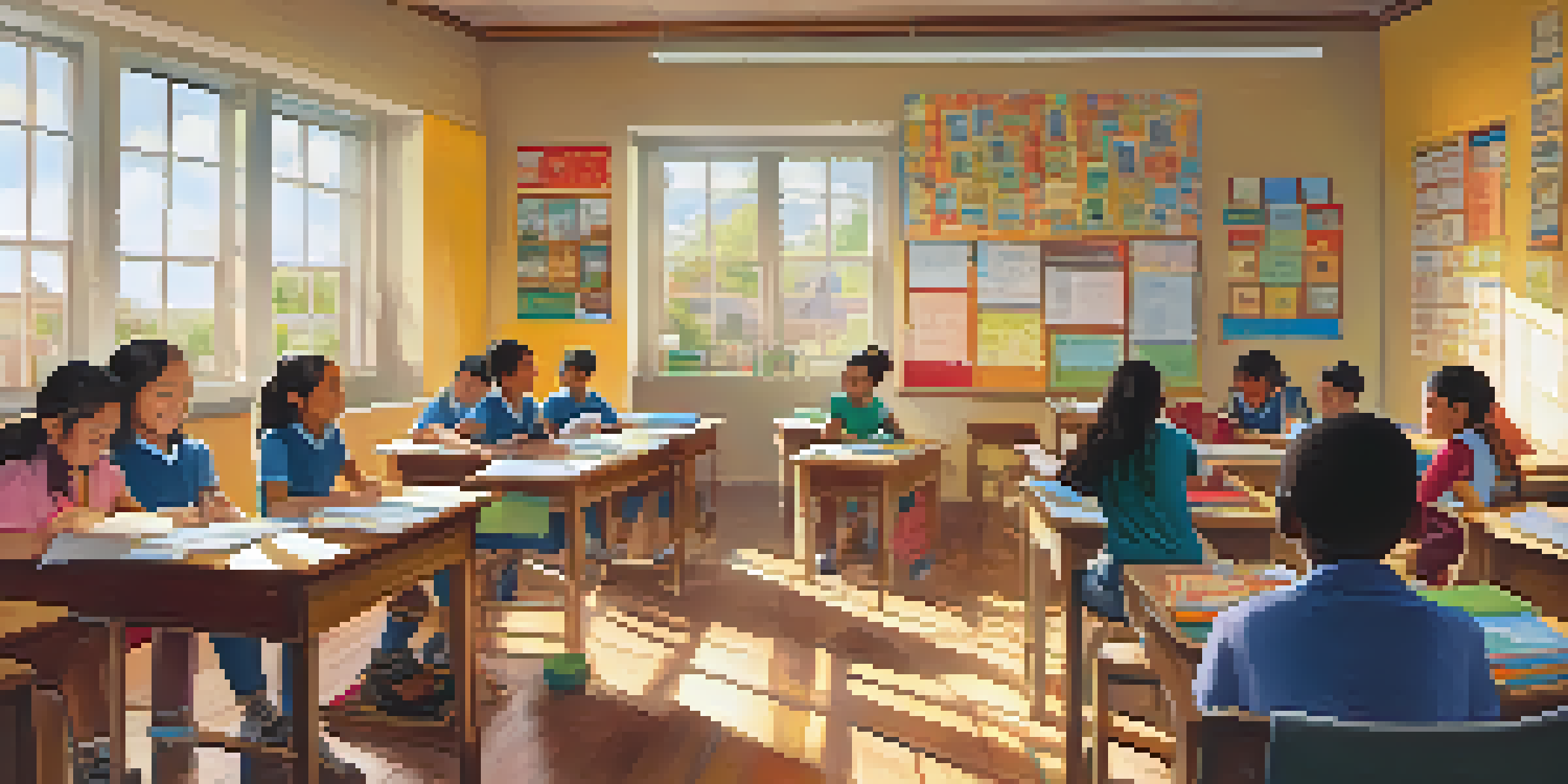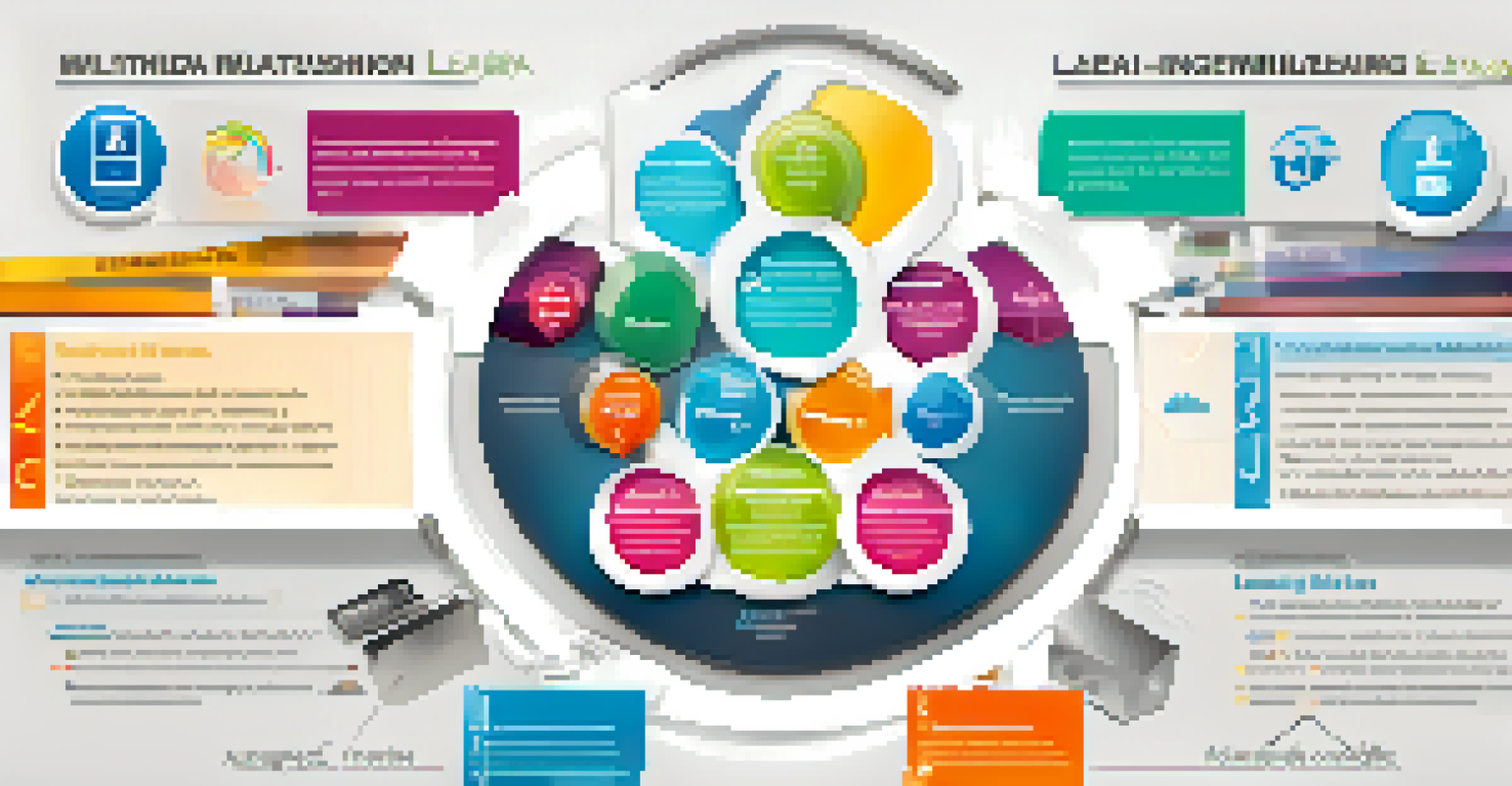Developing Open Educational Resources for Language Learning

Understanding Open Educational Resources (OER)
Open Educational Resources, or OER, are freely accessible teaching materials that anyone can use. They can include textbooks, lesson plans, and multimedia content designed to enhance the learning experience. The beauty of OER lies in their open licensing, which allows educators to adapt and share resources without worrying about copyright issues.
Education is the most powerful weapon which you can use to change the world.
For language learners, OER can be invaluable, providing diverse materials that cater to different learning styles. Imagine a student learning Spanish who can access interactive exercises, audio recordings, and culturally relevant videos all in one place. This variety not only keeps learners engaged but also allows them to immerse themselves in the language more effectively.
Ultimately, OER democratizes education, making high-quality resources available to anyone with an internet connection. By leveraging these resources, educators can create a more inclusive and supportive environment for language learning.
Identifying Language Learning Needs
Before creating OER, it’s essential to understand the specific needs of language learners. Are they beginners, intermediate, or advanced? What are their learning goals? Knowing the audience helps in designing resources that are relevant and effective. For instance, a beginner may require basic vocabulary and grammar exercises, while an advanced learner might focus on idiomatic expressions and cultural context.

Engaging with learners directly through surveys or focus groups can provide valuable insights. This feedback loop ensures that the materials developed truly resonate with their intended audience. Additionally, understanding the challenges learners face, such as pronunciation or comprehension, allows for the creation of targeted resources that address these hurdles.
OER Enhances Language Learning
Open Educational Resources provide diverse, accessible materials that cater to different learning styles, making language acquisition more engaging and effective.
By tailoring OER to meet these specific needs, educators can foster a more effective and enjoyable learning experience. After all, when learners feel that the resources are relevant to their journey, they are more likely to engage and succeed.
Incorporating Multimedia in OER
Multimedia resources are particularly effective in language learning because they appeal to various senses. Think about how a combination of text, audio, and video can create a richer learning experience. For instance, a video showing a conversation in a café can provide context that a textbook simply can’t offer, making the language more relatable and memorable.
The beautiful thing about learning is that no one can take it away from you.
Integrating multimedia elements also caters to different learning styles. Visual learners may benefit from infographics, while auditory learners will thrive with podcasts or audio recordings. By including a range of formats, educators can ensure that their OER meets the diverse preferences of all students.
Moreover, multimedia can help create an immersive environment. By using authentic materials, such as news clips or music, learners can see how the language is used in real-life situations, bridging the gap between theory and practice.
Using Collaborative Tools for Resource Development
Developing OER can be a collaborative process, bringing together educators, students, and even experts in the field. Tools like Google Docs or Padlet allow multiple contributors to work on resources simultaneously, fostering creativity and innovation. This collaborative approach not only enhances the quality of the materials but also encourages a sense of community among users.
Additionally, involving students in the creation process can be incredibly beneficial. When learners have a hand in developing their resources, they often feel more invested in their learning. For example, students could create vocabulary lists or practice exercises based on their interests, making the materials more relevant and engaging.
Collaboration Boosts Resource Quality
Involving educators and students in the development of OER fosters creativity and ensures that materials are relevant and engaging for learners.
Collaboration can also extend beyond the classroom. By connecting with educators from different regions or countries, creators can share diverse perspectives and resources, enriching the learning experience for everyone involved.
Ensuring Accessibility in OER
Accessibility is a crucial aspect of developing OER, ensuring that all learners can benefit from the materials. This includes considering diverse learning needs, such as those of students with disabilities. For instance, providing transcripts for audio content or alternative text for images can make resources usable for everyone.
Moreover, using clear and simple language helps in making materials more accessible. Avoiding jargon and complex structures ensures that learners at all levels can understand and utilize the resources effectively. Remember, the goal is to foster learning, not to create barriers.
By prioritizing accessibility, educators can create an inclusive environment where every learner feels welcome and empowered to succeed in their language journey.
Evaluating the Effectiveness of OER
Once OER are developed, it’s essential to evaluate their effectiveness. Gathering feedback from users can provide insights into what’s working and what needs improvement. This could be done through surveys, focus groups, or even informal discussions, allowing educators to refine their resources over time.
Additionally, tracking learner progress can help gauge the impact of the OER on language acquisition. For instance, if students demonstrate improved vocabulary retention or speaking skills after using a specific resource, that’s a clear indication of its effectiveness. This data can guide future resource development, ensuring that educators continuously meet learner needs.
Accessibility is Key in OER
Prioritizing accessibility ensures that all learners, including those with disabilities, can effectively utilize educational resources, promoting an inclusive learning environment.
Ultimately, evaluation is not a one-time task; it should be an ongoing process that informs and enhances the quality of OER. By fostering a culture of continuous improvement, educators can ensure that their resources remain relevant and effective in supporting language learning.
Sharing and Promoting OER for Wider Reach
Creating OER is just the first step; sharing them widely is equally important. By promoting resources through social media, educational platforms, and community forums, educators can reach a broader audience. Imagine a teacher in one country sharing their innovative lesson plan with educators across the globe, all thanks to OER.
Networking with other educators also plays a crucial role in dissemination. Collaborating with organizations that focus on open education can amplify efforts and help reach even more learners. Participating in conferences or webinars can provide opportunities to showcase OER and gather feedback from peers.

Furthermore, encouraging learners to share their experiences with the resources can create a ripple effect. When students discuss and recommend materials they found helpful, it builds a community around OER and fosters a culture of sharing knowledge and resources.